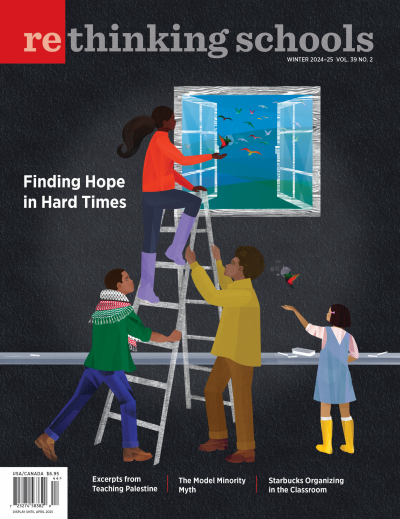San Leandro, California
Paulette Smith, alumni group coordinator and elementary school principal, said,
Section 5: “Teaching Blackness, Loving Blackness, and Exploring Identity” of Teaching for Black Lives has sparked dynamic and thought-provoking conversations among our team, centering on themes of racial justice, identity affirmation, and culturally sustaining pedagogy. Rich discussions have emerged around the importance of creating affirming spaces for Black students to see themselves as powerful, brilliant, and capable of shaping their futures. Key questions include:
- How do we intentionally disrupt racial bias in our curriculum?
- How can we elevate Black voices while fostering critical consciousness in all students?
Action plans have begun to take shape, focusing on embedding counter-narratives into lessons, building community partnerships, and developing student-led initiatives that promote equity.
Des Moines, Iowa
Haileigh Mejia, group coordinator and middle school special education teacher, said,
At the very beginning of our book study we read Donovan Livingston’s Lift Off poem. A lot of the group members highlighted the line: “For some, the only difference between a classroom and a plantation is time.” This caused quite a few people in our group to become emotional. People started to think about their own spaces in education and how they may be contributing or perpetuating the system so students do not feel like school is a liberating place.
“Space for Young Black Women” sparked a lot of interest. Teachers engaged with this because they learned or reaffirmed the idea that many of our students just need to see and have space for their identities to be valued.
“Presidents and the Enslaved: Helping Students Find the Truth” led teachers to think about ways they can add or adapt their lessons to actually teach for Black lives. In small groups of two to four with similar content, educators brainstormed ideas they took from sections in Teaching for Black Lives.
“Beyond Just a Cells Unit: What my science students learned from the story of Henrietta Lacks” and “Claiming and Teaching the 1963 March on Washington” allowed our group members to consider what has been intentionally left out of textbooks and lessons.


